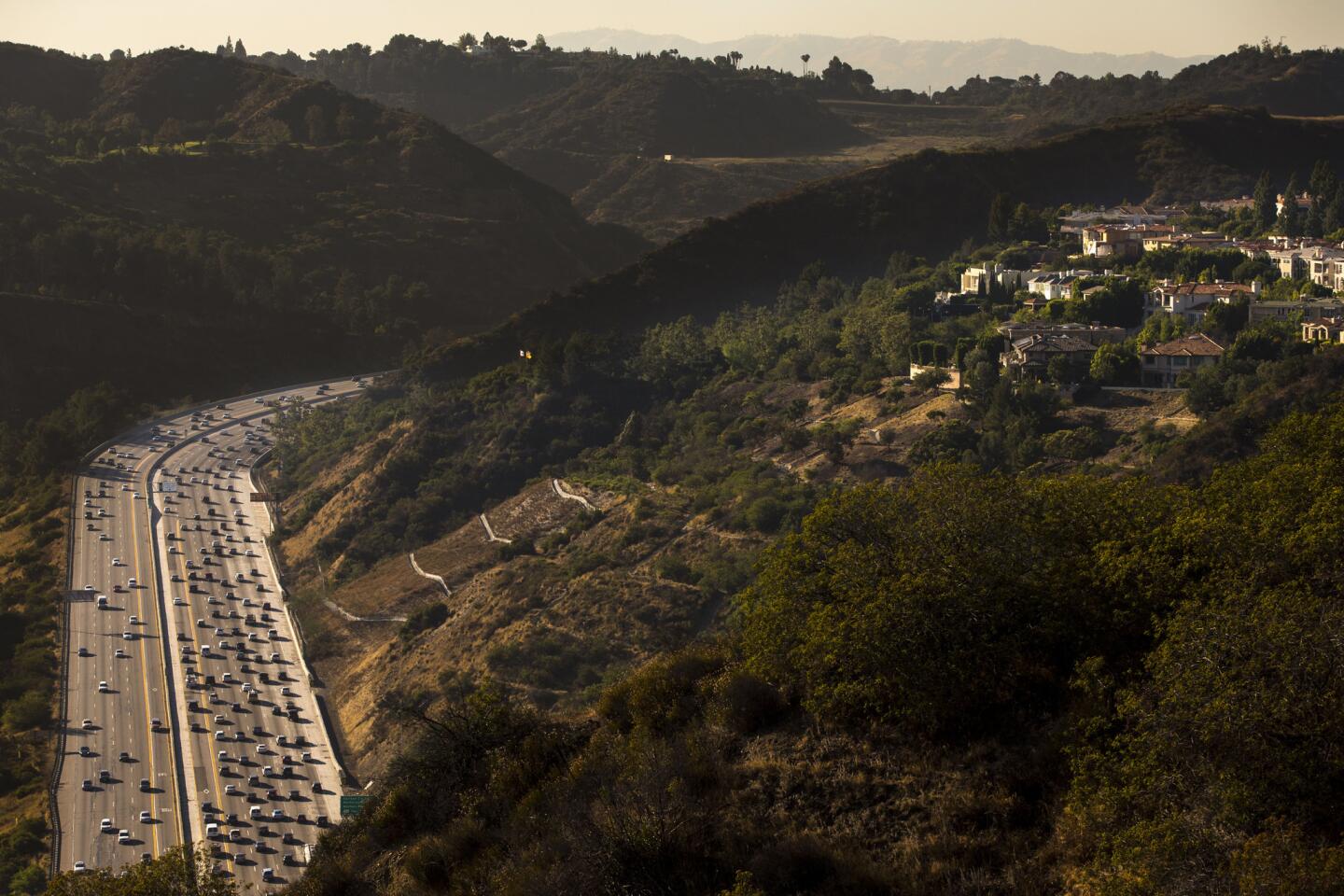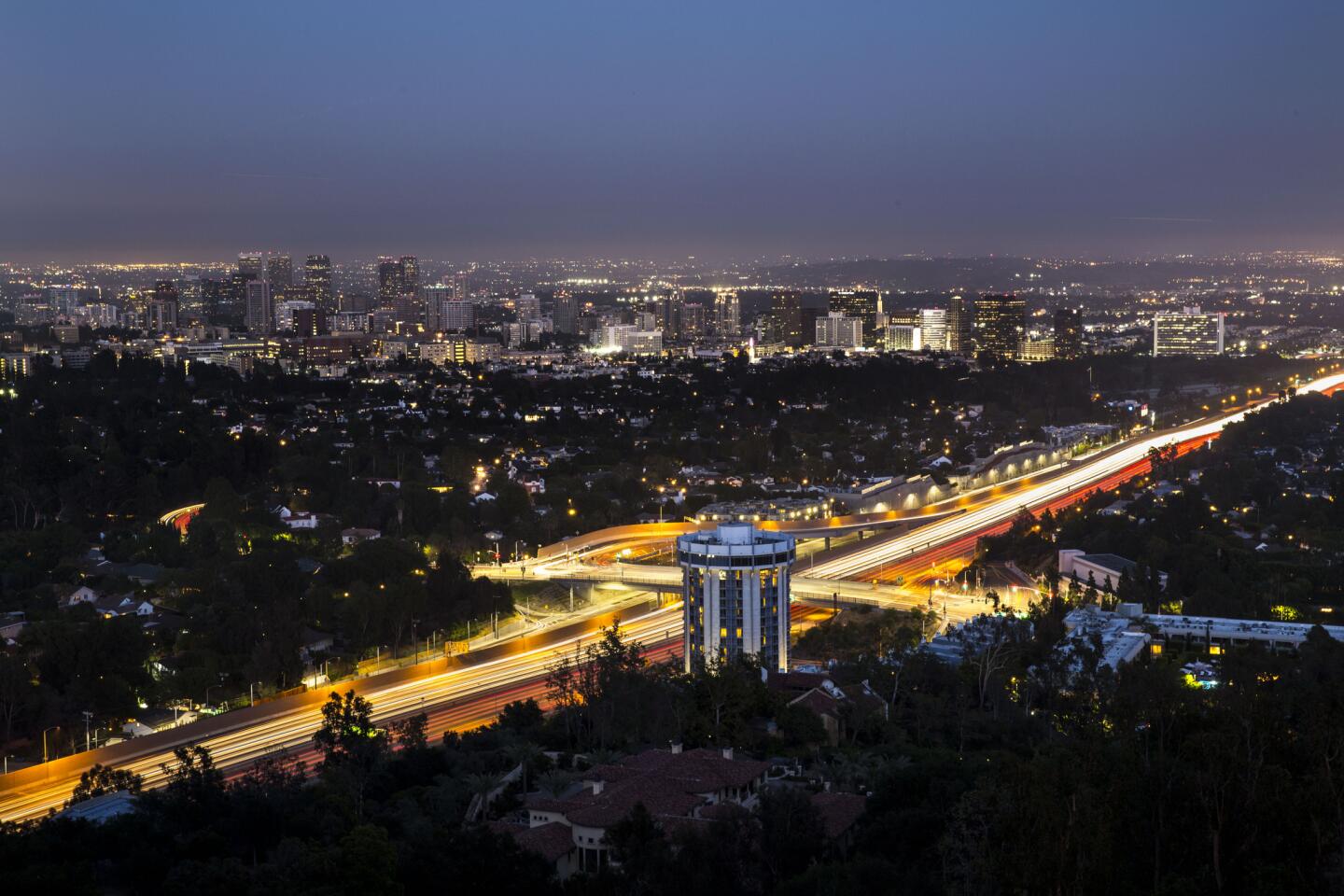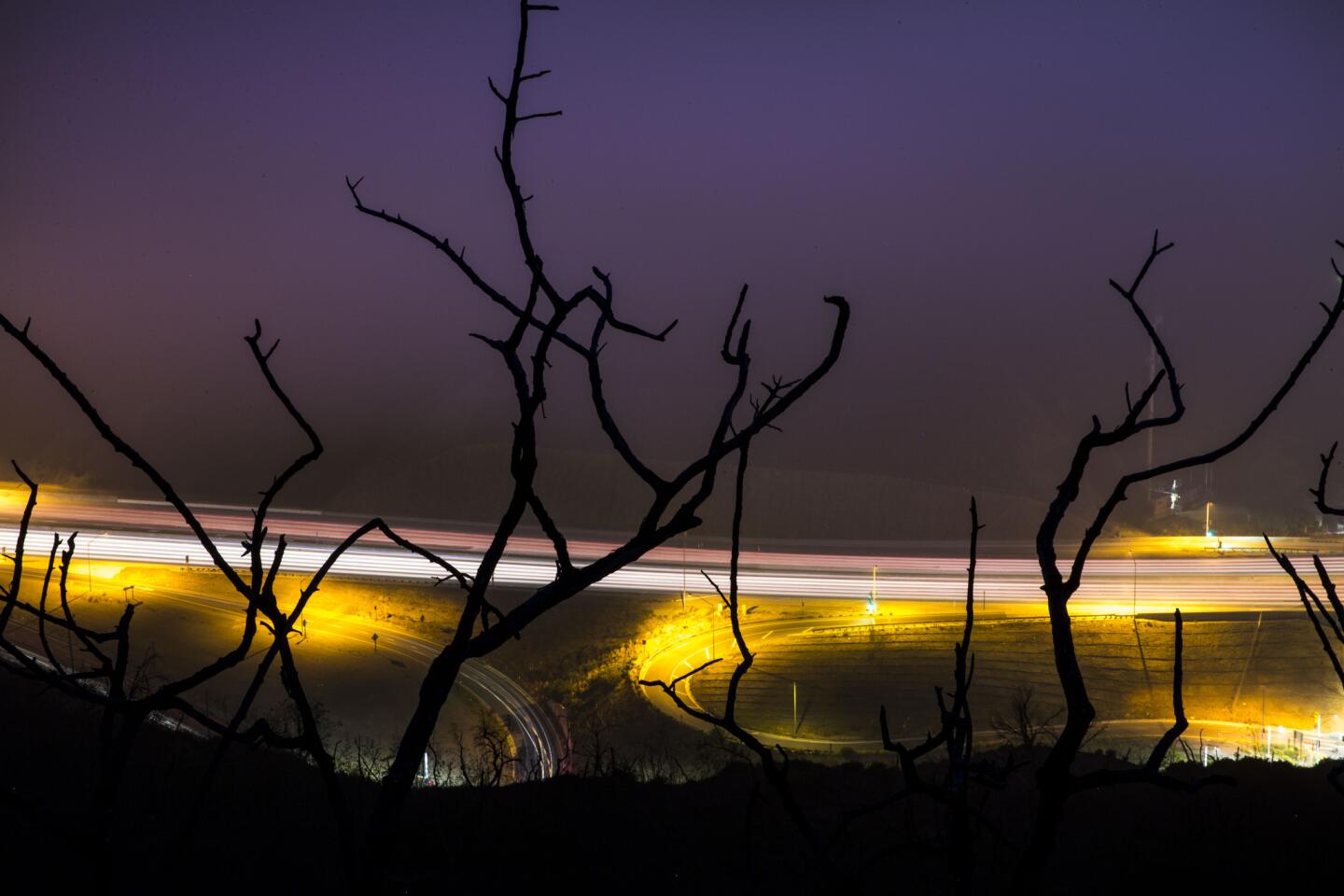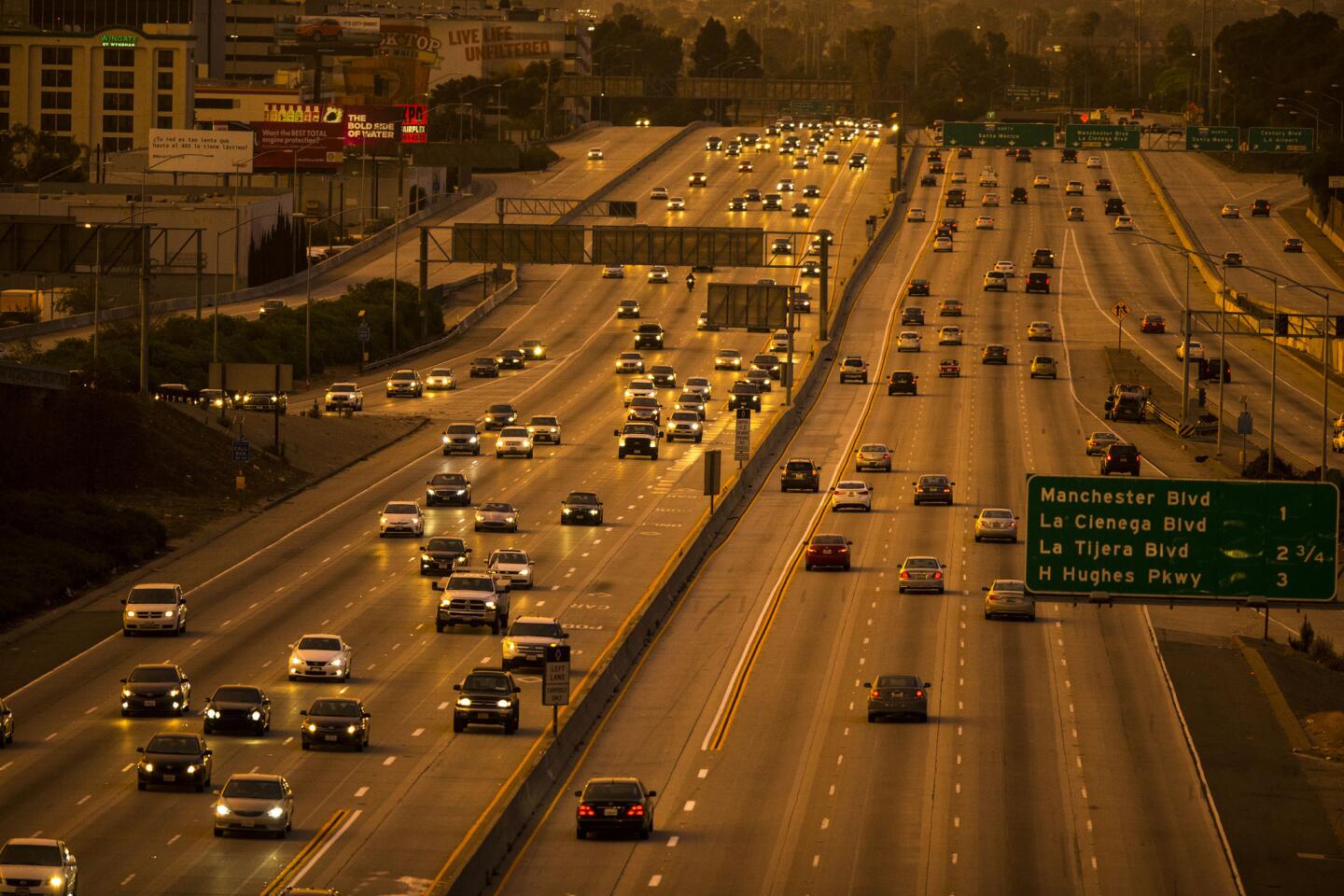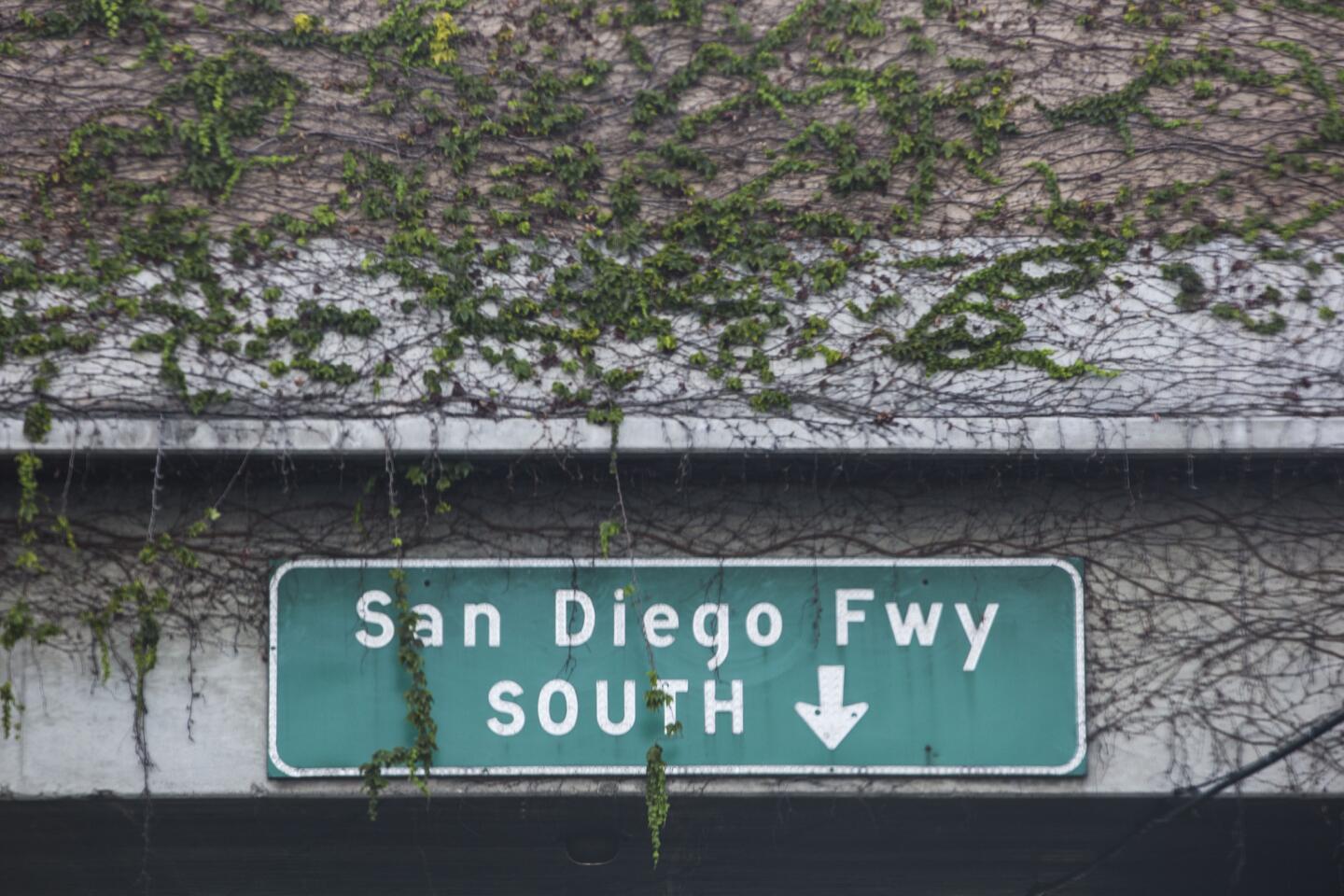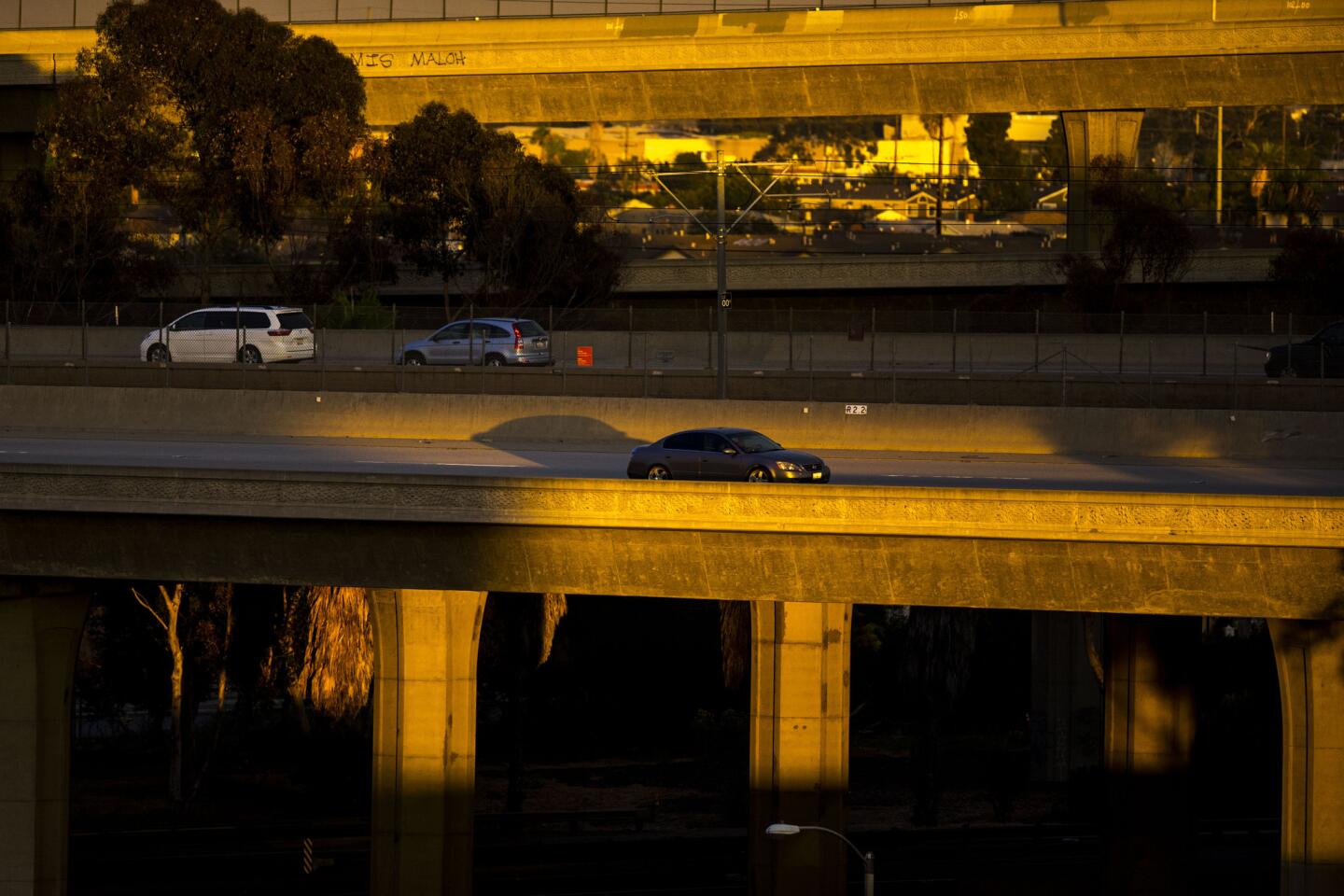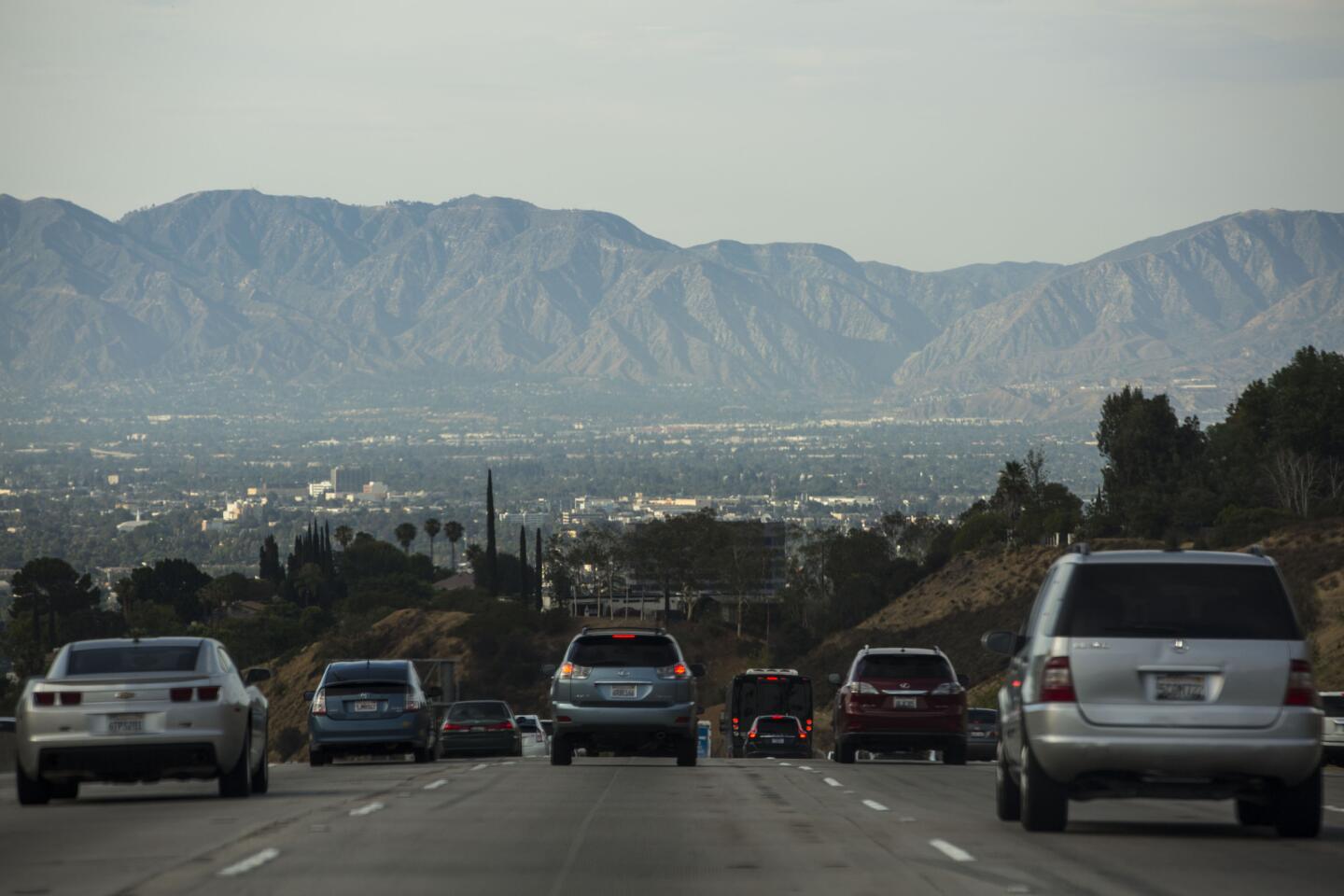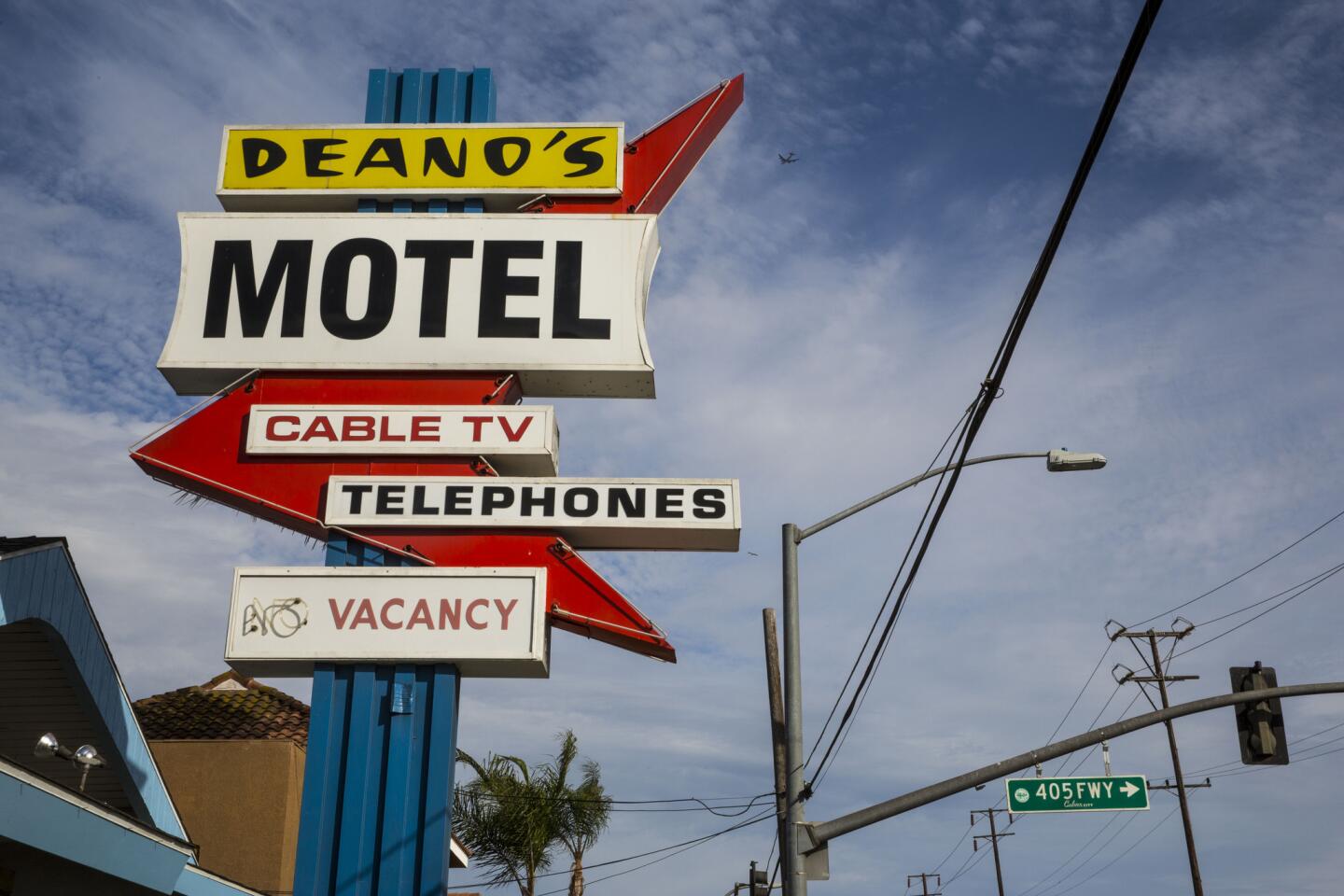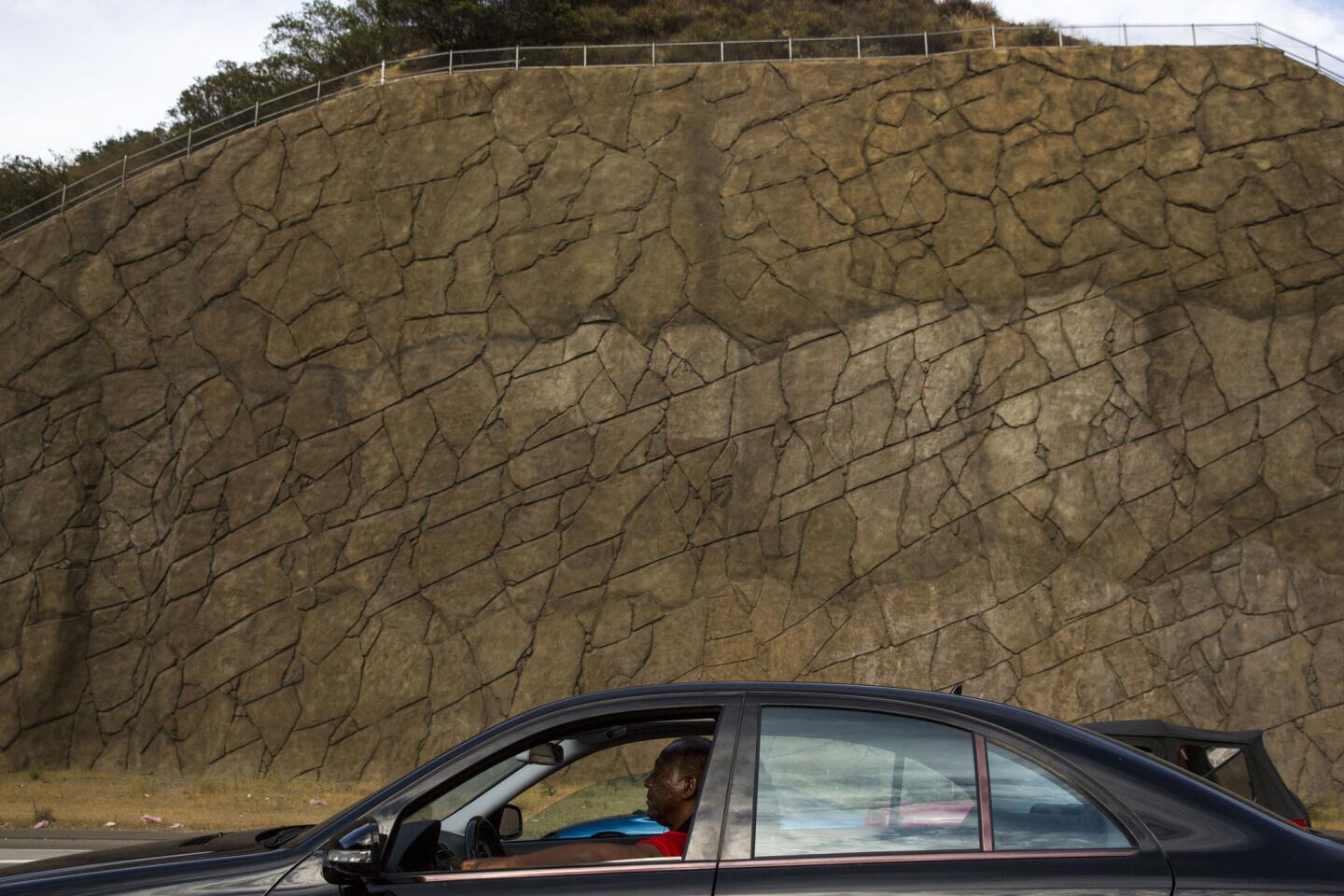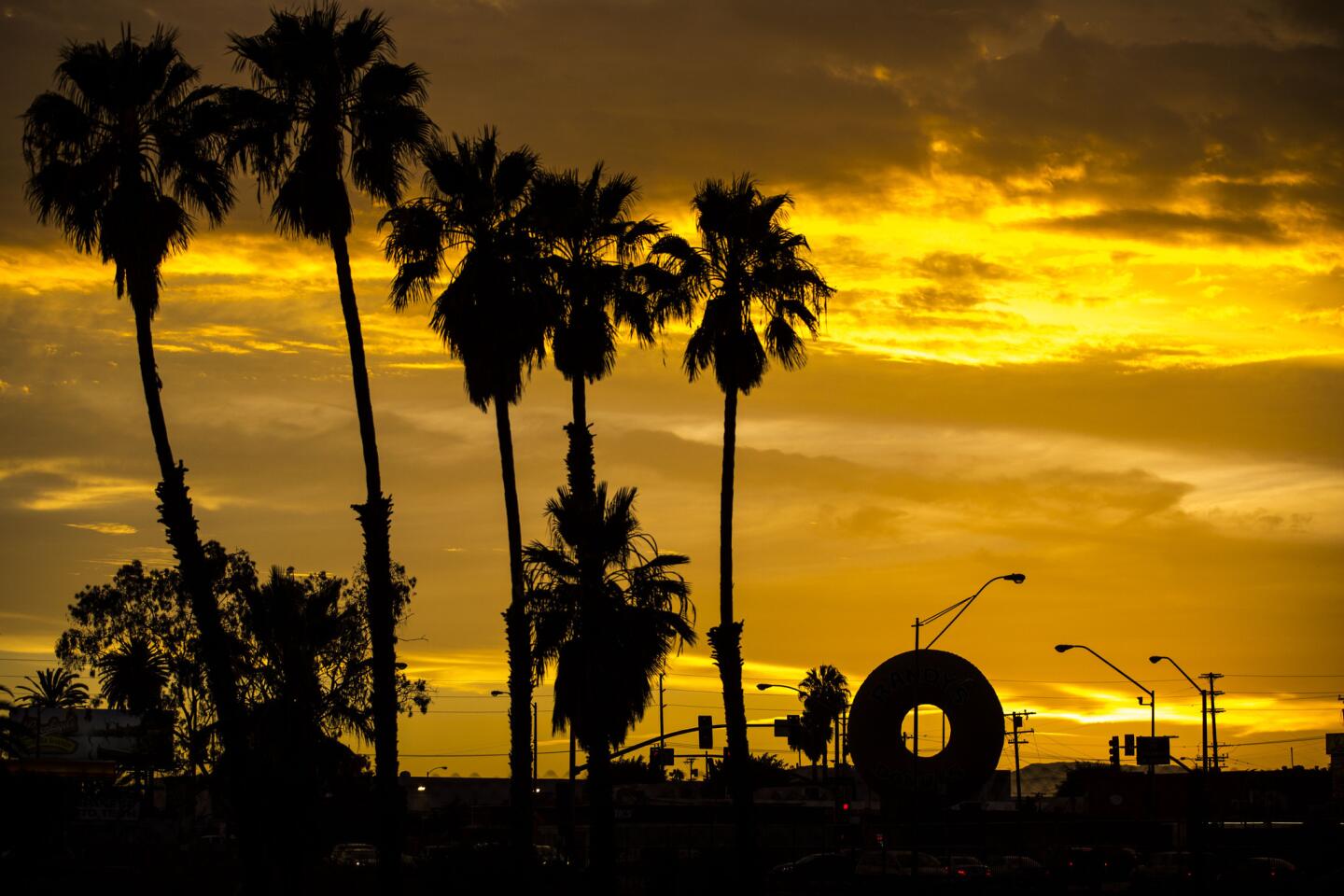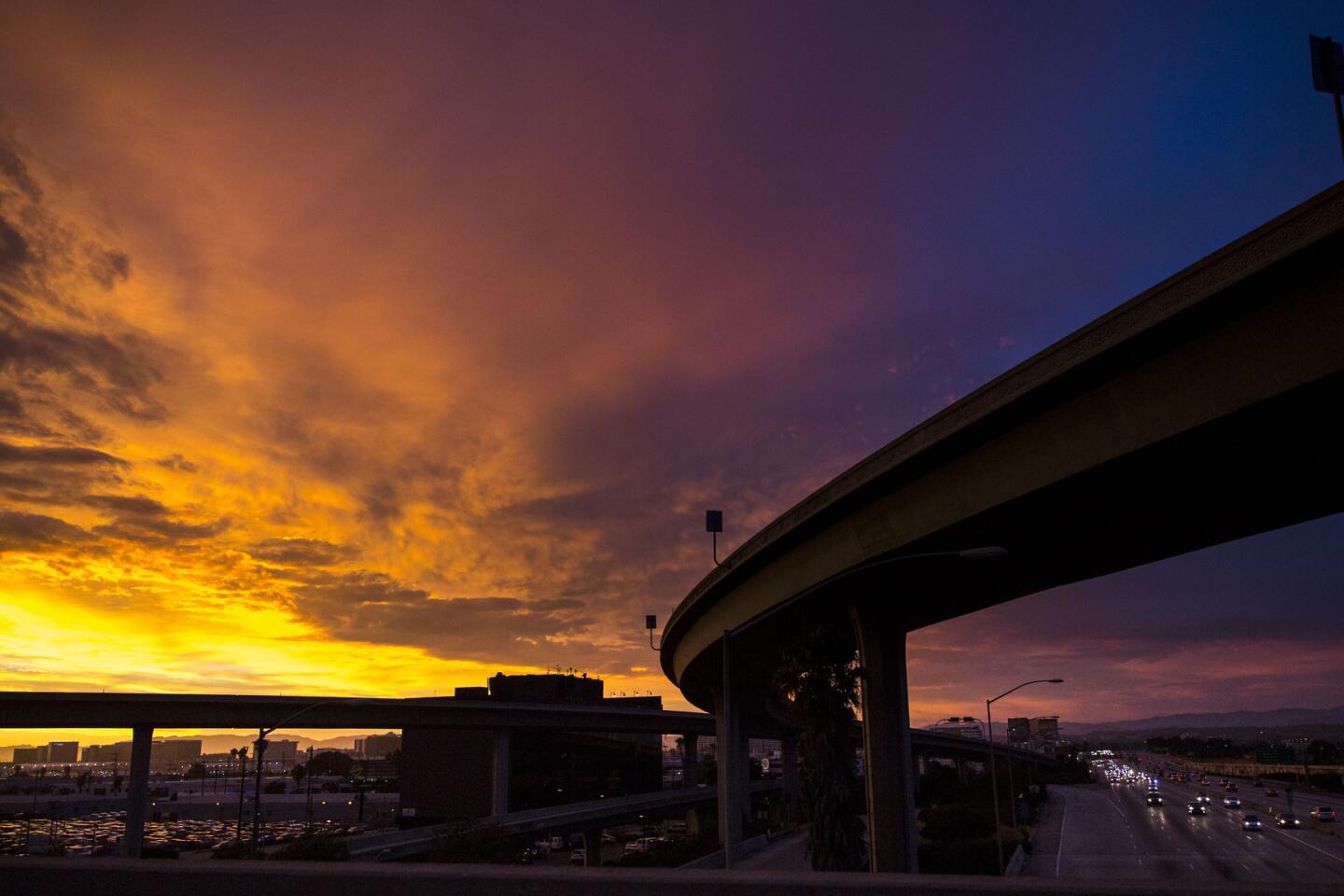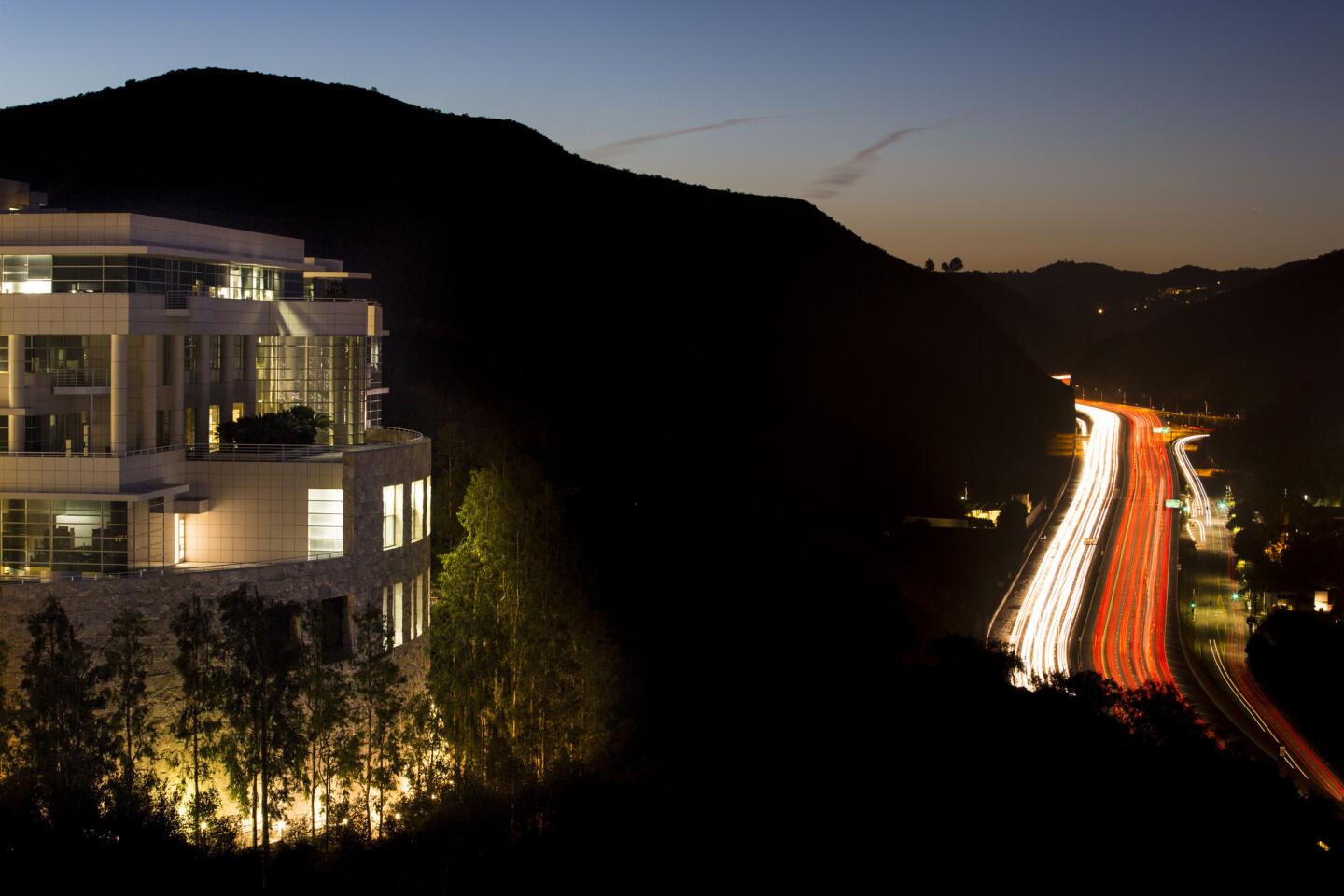$1.14 billion later, expanded 405 Freeway is a hodgepodge of design
- Share via
Imagine if the ancient Romans, late in their empire-building days, had suddenly forgotten how to design aqueducts. Or if Chicago started filling the Loop with a collection of ungainly skyscrapers, each more of an eyesore than the last.
Something similar — a sad reversal of infrastructural fortune — is happening in Southern California. A region once synonymous with freeways no longer builds them with much confidence or skill.
How else to judge the new-look 405 Freeway, which has been widened, at a cost of $1.14 billion, to make room for a single carpool lane on its northbound side between West Los Angeles and the San Fernando Valley?
SIGN UP for the free Essential Arts & Culture newsletter >>
As it snakes over the Sepulveda Pass, the expanded freeway should feel like a unified corridor, a streamlined platform for dramatic views. Given typical traffic patterns on this part of the 405, among the busiest stretches of highway in the country, it should look as good to drivers going 3 mph as 63.
Instead, it’s a hodgepodge, a patchwork in which every seam not only shows but also appears to be threatening to come loose. From one stretch to the next, from one side to the other, the new design keeps up a running argument with itself.
The walls near the Getty Center don’t match the ones fronting the Skirball Cultural Center, at the top of the pass, or those farther south, approaching UCLA. Some of the landscaping is lush, some fit for the desert and some still waiting to be planted.
If the new 405 were a house, it would be covered with stucco, glass, shingles and tile, with a little Tudor half-timbering thrown in for good measure.
Freeway construction in Los Angeles used to be the product of bold, punishingly direct regional planning, for better and quite often for worse. The process now requires cobbling together a series of decidedly local solutions. It’s become the public-works equivalent of house-to-house combat.
The basic, strategic myopia of that approach explains why the new 405, despite its billion-dollar price tag, doesn’t include space for a light-rail line, leaving in place a major gap in the transit network between Santa Monica and the west side of the San Fernando Valley.
It also explains why it lacks a consistent, overarching design. Engineers at Los Angeles County’s Metropolitan Transportation Authority, which oversaw the five-year, 10-mile expansion project with Caltrans, contractor Kiewit, engineering firm HNTB and landscape architect Lynn Capouya, had to hammer out a wide range of aesthetic decisions with the property owners whose land runs alongside the 405.
Along the freeway near the entrance to Bel Air Crest, an upscale gated subdivision about four miles north of UCLA, the landscaping had to be replaced virtually as it looked before construction began, to complement the neighborhood’s dense, thirsty collection of trees, shrubs, vines and colorful beds of flowers. Next to the federal building in Westwood, meanwhile, the design team settled on a sparse, drought-tolerant new landscape.
The variety of walls and fences is even wider. The retaining walls, rising as high as a six-story building, use a method known as soil-nail construction, in which concrete is sprayed over steel rods that have been “nailed” into the hillside.
The concrete is then dyed in a thoroughly unpersuasive attempt to look like rock or match the color of the hill it is holding up. This technique is something like the comb-over of freeway design.
The new sound walls are mostly a beige-colored concrete block. Sometimes these various walls are topped by chain-link fencing, sometimes by iron railings and sometimes by barbed wire.
Near the Getty Center, whose property skirts the western edge of the freeway, there is a short stretch where soil-nail walls, concrete block, unscored concrete, a sort of upscale chain-link (different from the kind used elsewhere) and white panels in the style of Richard Meier, the Getty’s architect, are mashed uncomfortably together.
Michael Rogers, the Getty’s director of facilities, said this arrangement was the result of “dozens and dozens of meetings” with officials from Metro and Caltrans.
There is a glimmer of the old confidence, the muscular form-making that once marked L.A. freeway design, in the new offramps leading to Wilshire and Sunset boulevards. Those ramps in particular have helped traffic on and near the freeway move a bit more smoothly, though some transportation planners suggest it’s only a matter of time before the extra lane lures enough new drivers to make the 405 as sluggish as it was before.
More often the design combines utter expediency with bigger gestures, like the wide soil-nail walls and bridges near the crest of the hill, that instead of taking advantage of their grand scale try and fail to hide it.
Occasionally Metro’s interest in giving neighbors a powerful say tied its decision-making process in knots. Take the new sound wall that was built along Sepulveda Boulevard, just north of Montana Avenue.
Sandblasted into the wall is a vast, delicate pattern of birds, insects and architectural details that was devised, after more than 20 meetings with nearby homeowners and community groups, by artists Freya Bardell and Brian Howe.
Not long after the wall was finished, gardeners planted a row of vines and trees along the bottom. The vines, creeping upward, have already begun covering the carefully vetted design, for which Bardell and Howe, according to Metro figures, were paid a total of $35,000.
The way the 405 expansion was carried out might seem a heartening victory for the legacy of Jane Jacobs over that of Robert Moses. Jacobs fought bitterly against plans hatched by Moses, the infrastructure czar of New York City, to run an expressway through Greenwich Village.
Her 1961 book “The Death and Life of Great American Cities” remains a bible for activists around the country looking to claim some control over the design of their neighborhoods. In the case of the 405 they claimed quite a bit.
In terms of where (or whether) freeways are built, the new approach is a victory for public participation. No longer are communities simply pushed out the way, their houses and apartment buildings razed, to make way for new highways.
But there is a major difference between the skills required to oppose a freeway and those needed to design one. When it comes to public-works projects of this scale, a piecemeal political process usually guarantees a piecemeal final product.
Driving along the crumbling, unkempt freeways that crisscross Southern California, it’s easy to forget that many were world-class models of infrastructure design, celebrated by engineers and architecture critics alike, when they were built in the decades after World War II. Like bridges, urban highways can be powerfully, beautifully efficient when they’re done right.
The expanded 405 might be the first L.A. freeway project to look haggard and disjointed the day it opened.
Rethinking the Freeway: One in a series of occasional articles examining the future of a Southern California institution.
SIGN UP FOR OUR ENTERTAINMENT NEWSLETTERS:
Stunning photos, celebrity homes: Get the free weekly Hot Property newsletter >>
SIGN UP for the free Indie Focus movies newsletter >>
SIGN UP for the free Classic Hollywood newsletter >>
SIGN UP for the free Essential Arts & Culture newsletter >>
More to Read
The biggest entertainment stories
Get our big stories about Hollywood, film, television, music, arts, culture and more right in your inbox as soon as they publish.
You may occasionally receive promotional content from the Los Angeles Times.
